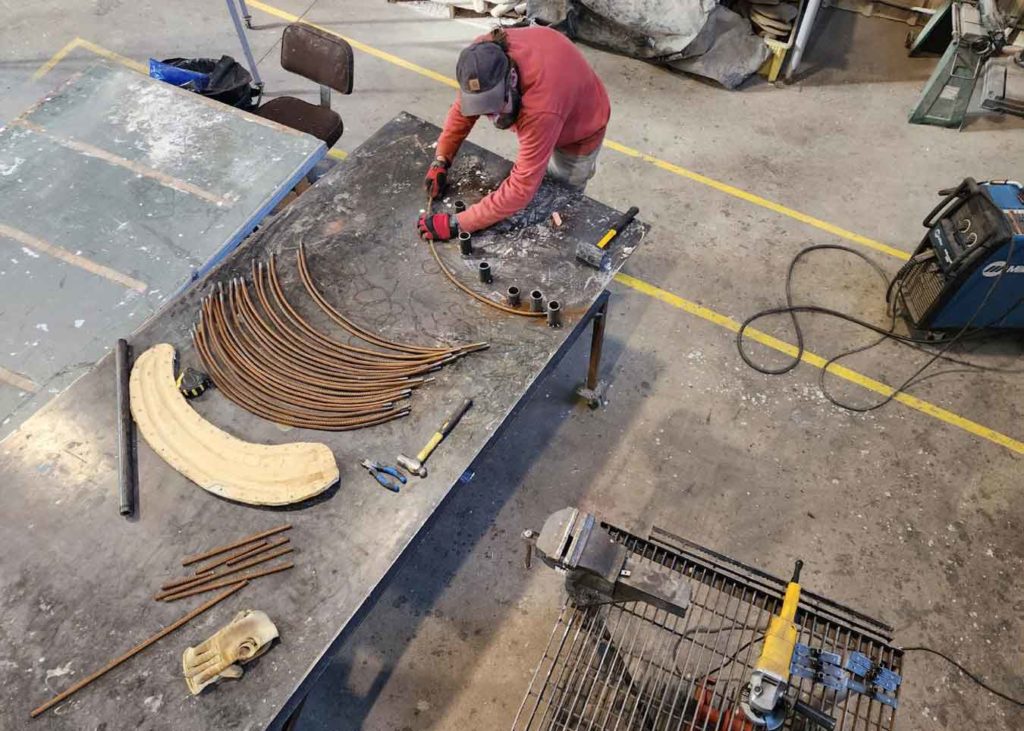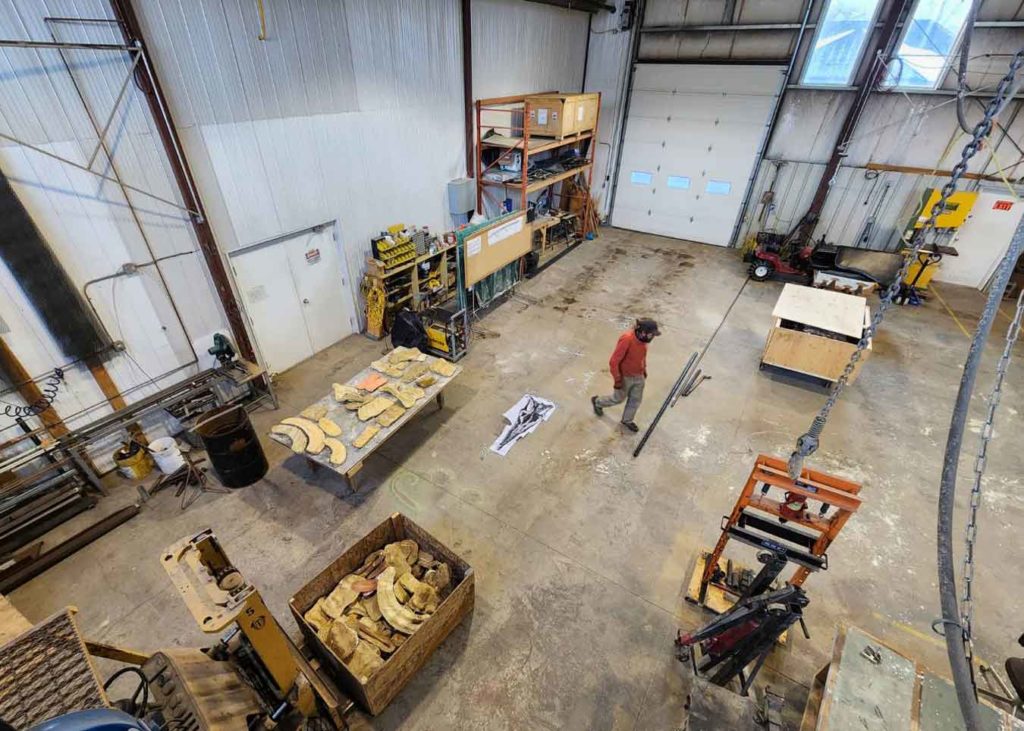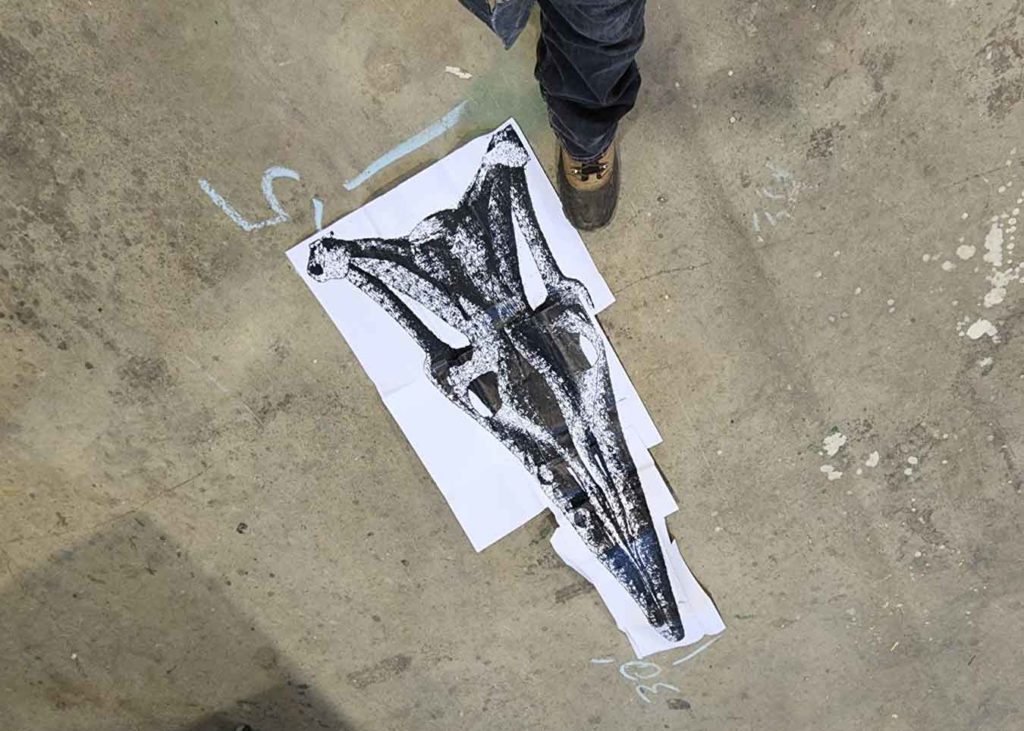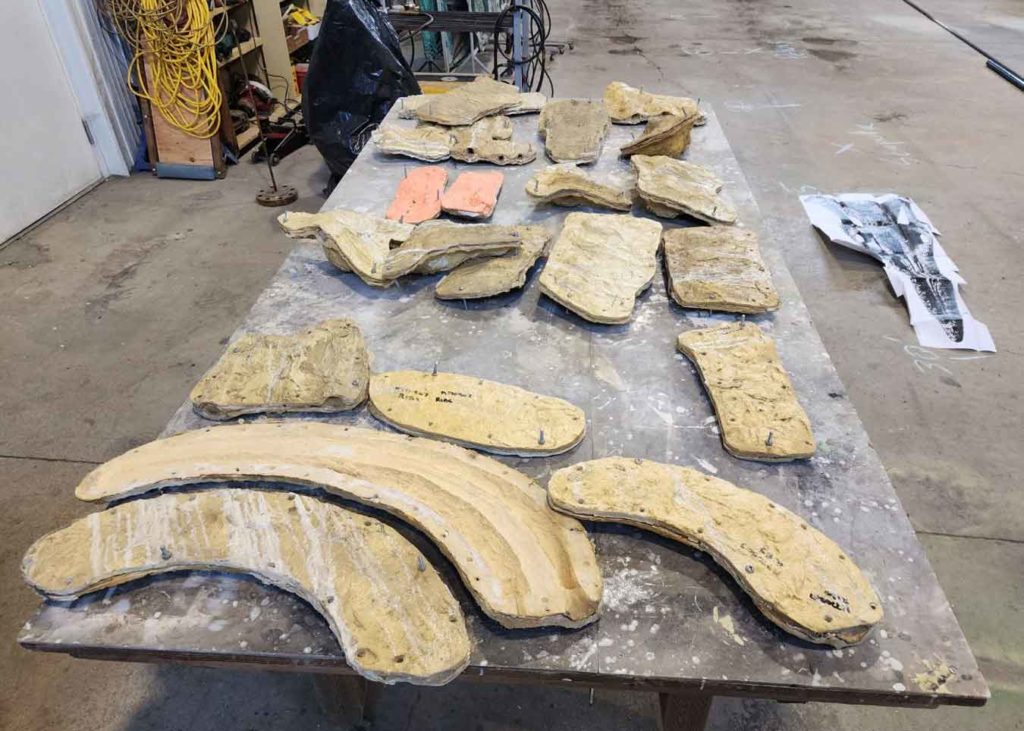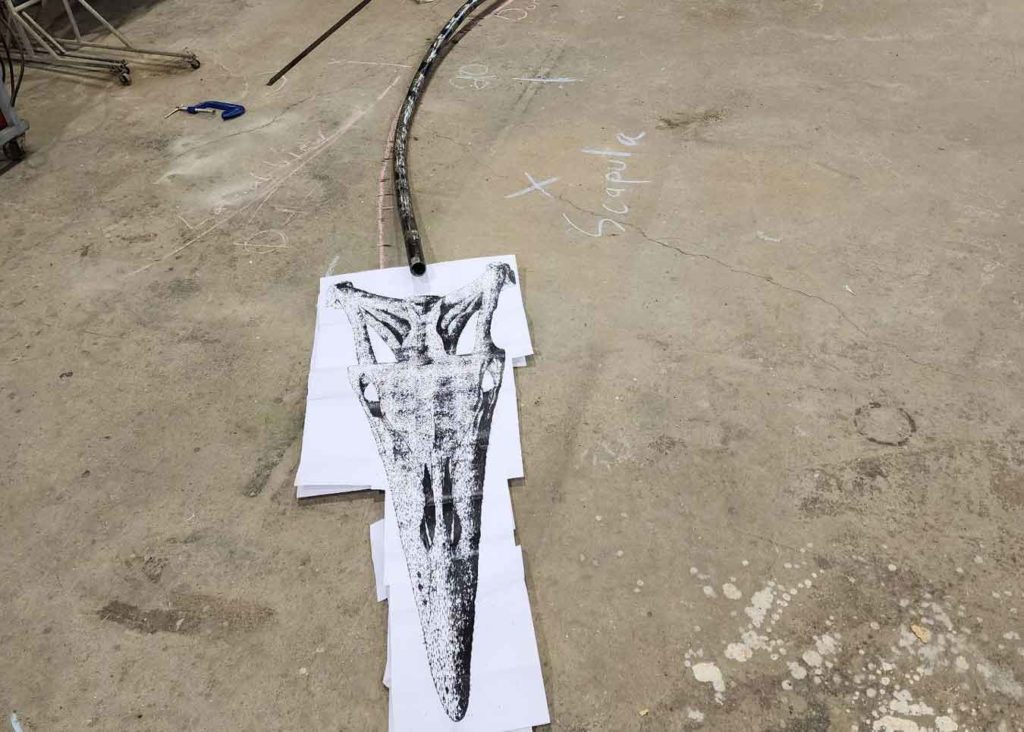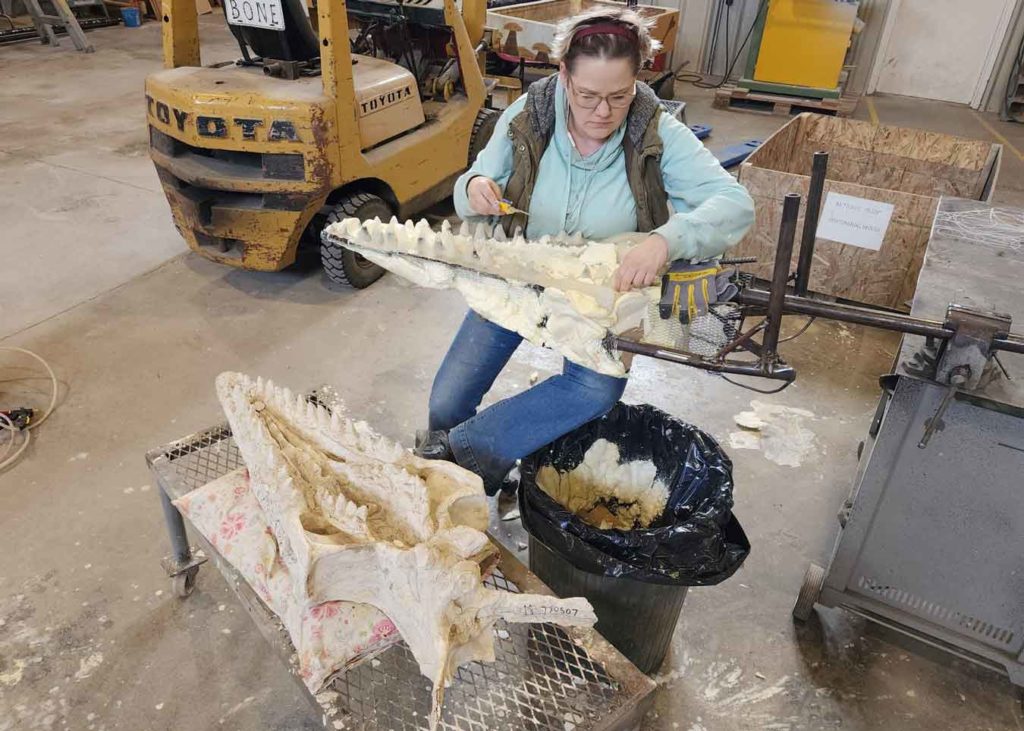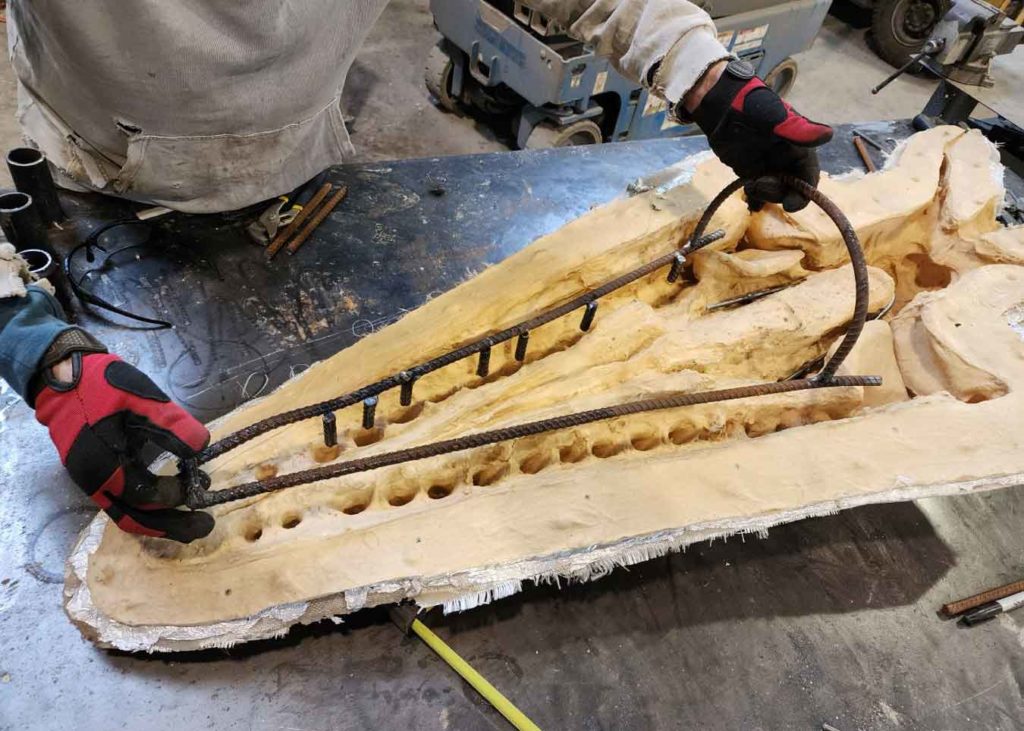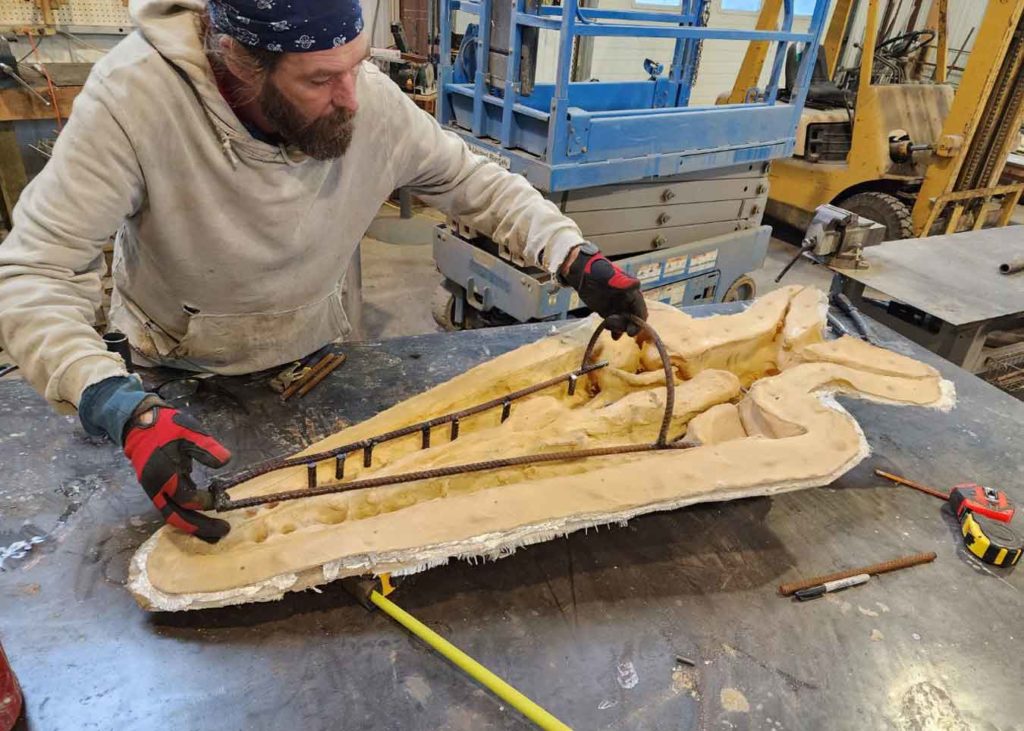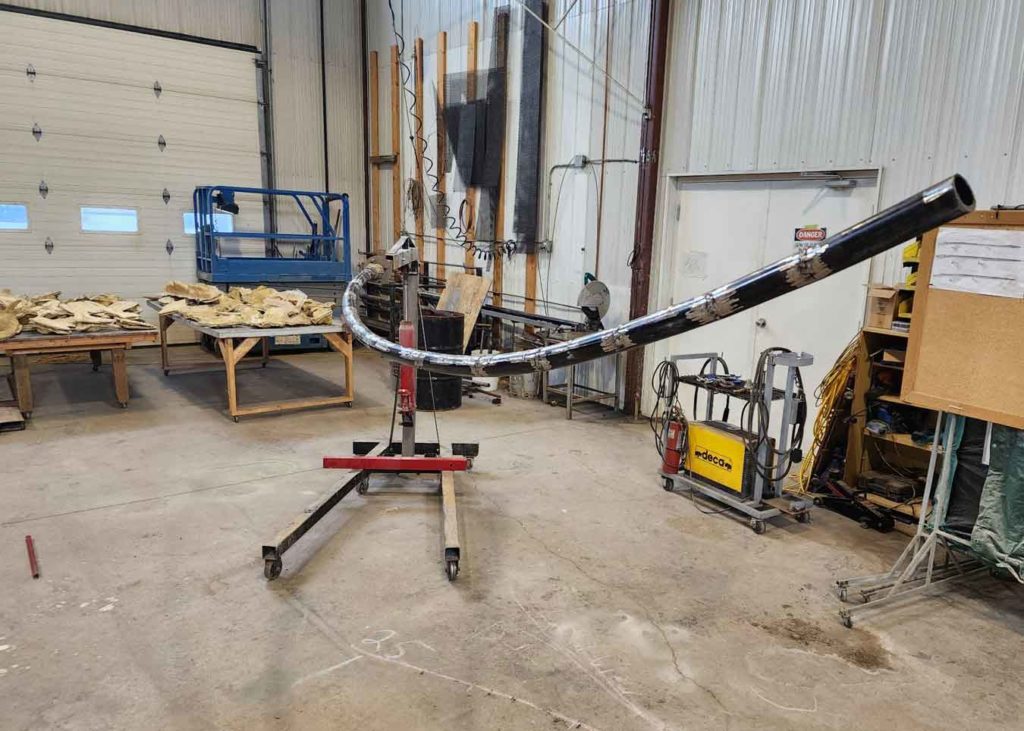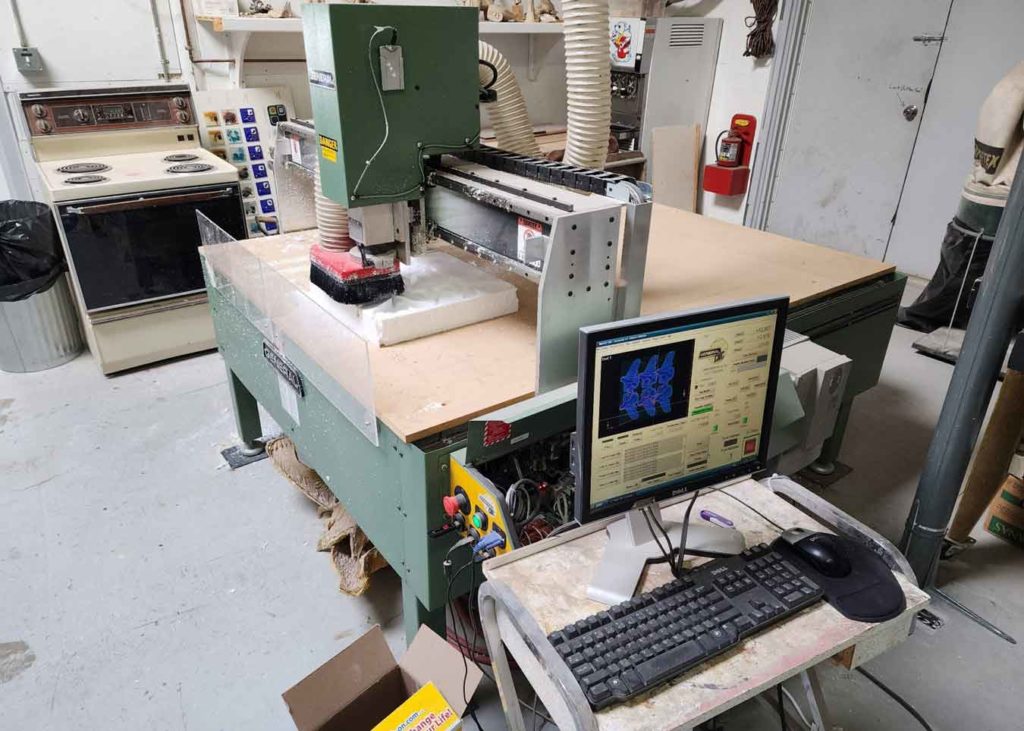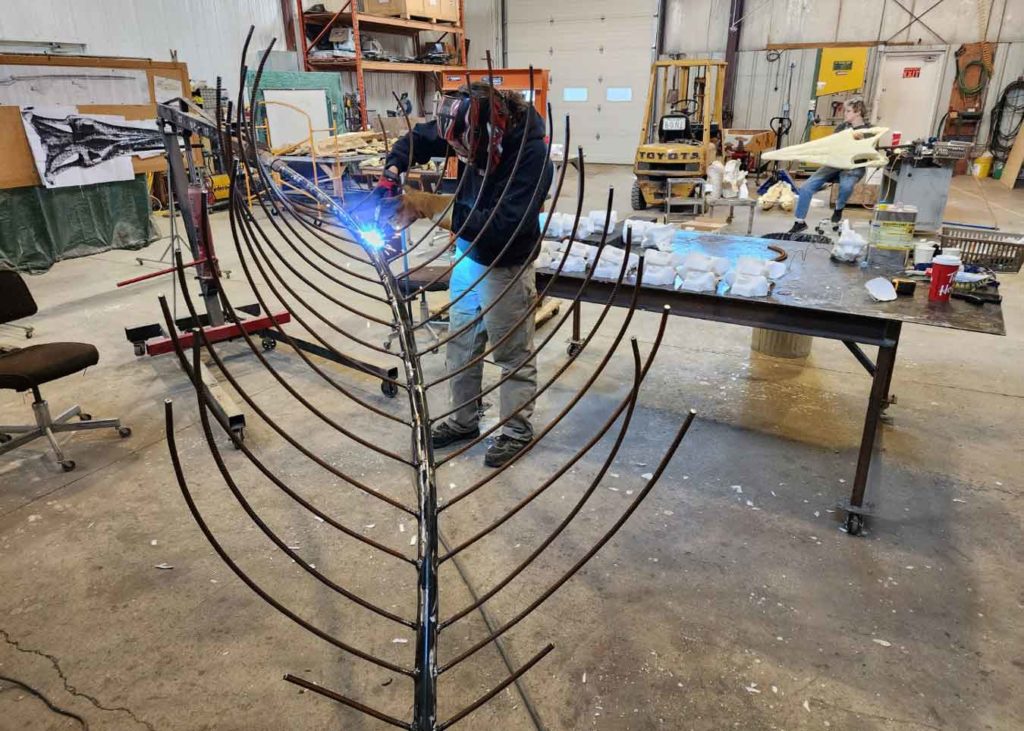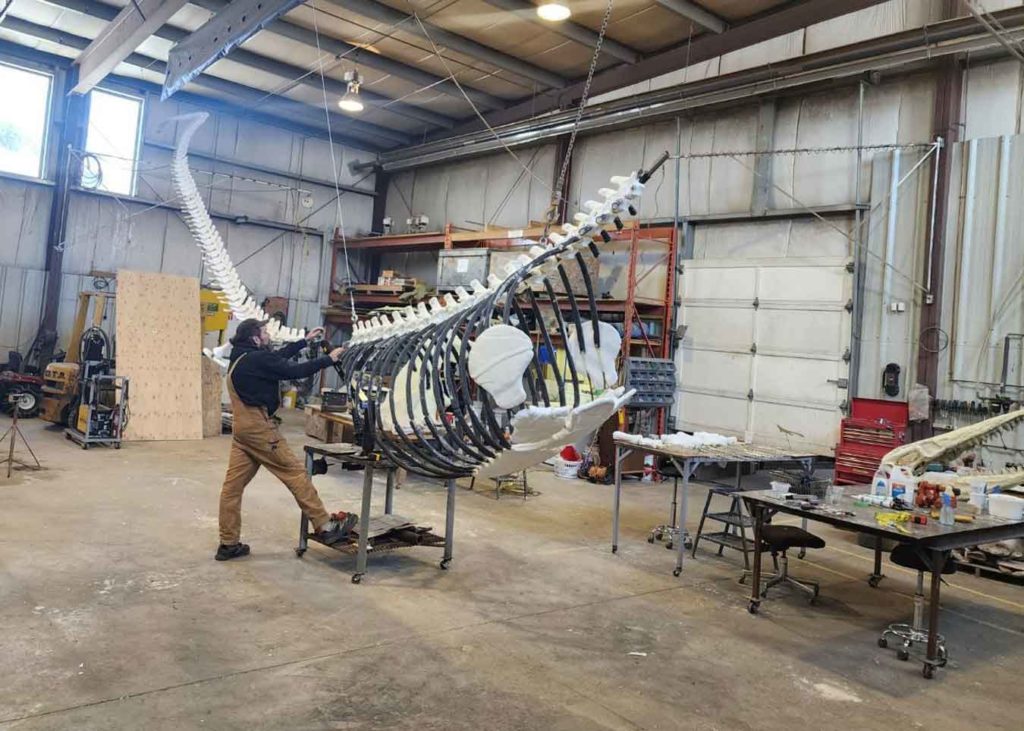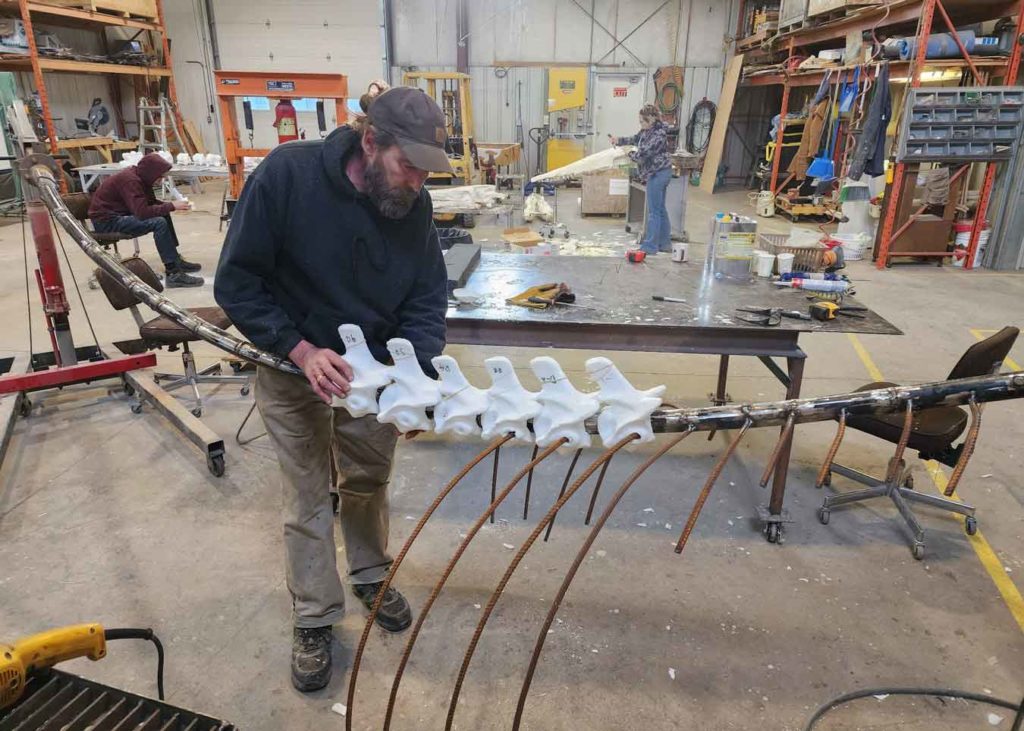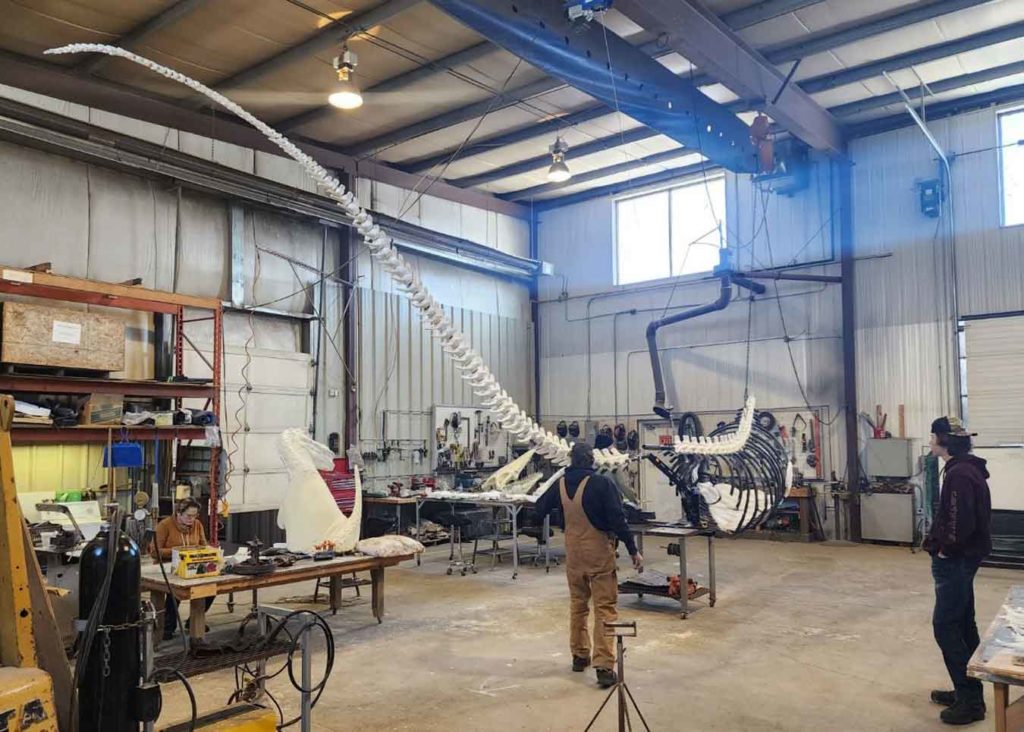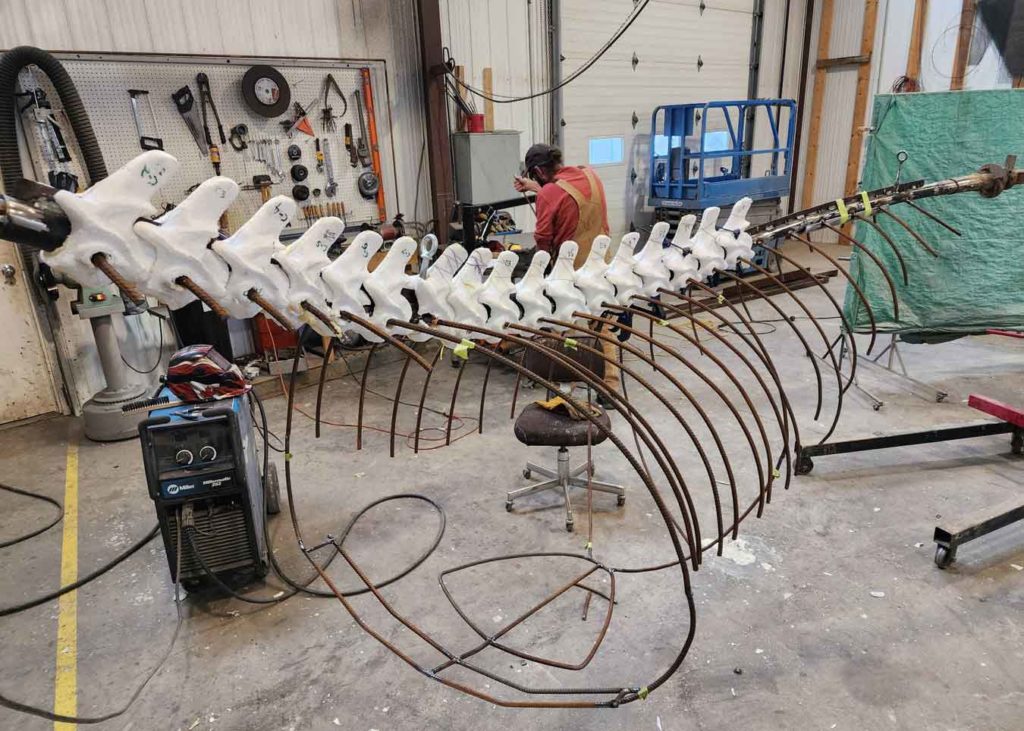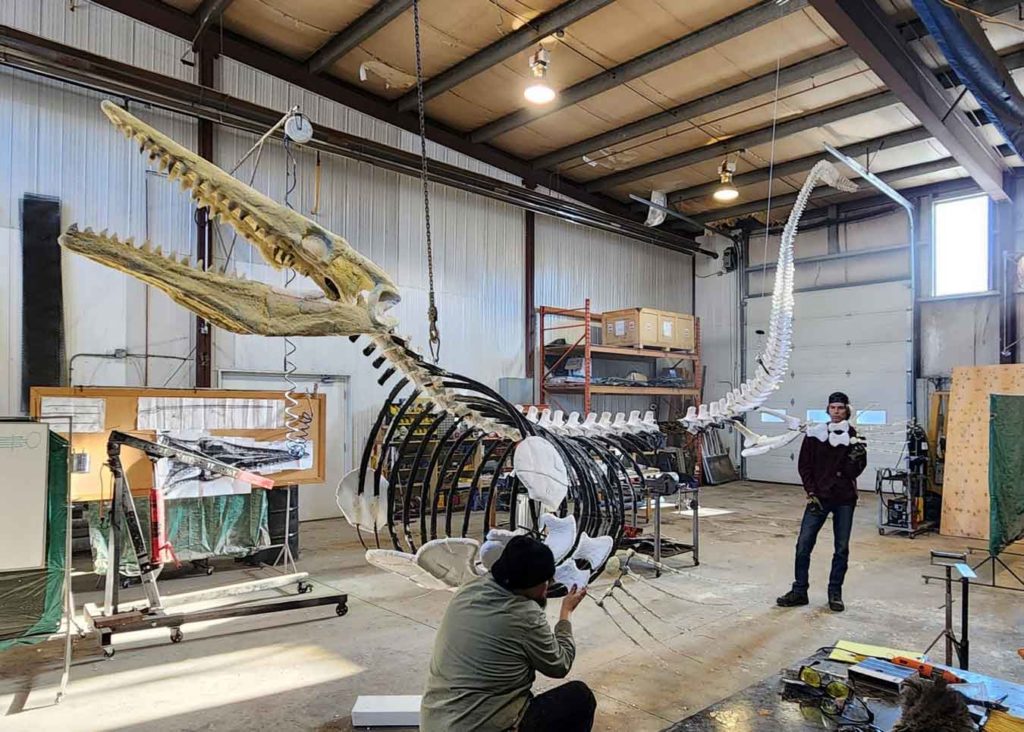Carolside Mosasaur Project
Carolside Reservoir
Meet the Majestic Carolside Mosasaur
Journey back in time and dive into the depths of the prehistoric waters at Carolside Reservoir! This lifelike sculpture is an extraordinary testament to one of the most fearsome marine creatures to have ever roamed our planet. The Mosasaur, a marine lizard of gargantuan proportions, ruled the ancient oceans during the Late Cretaceous period, 70-66 million years ago. It was a time when dinosaurs dominated the land, but in the seas, Mosasaurs reigned supreme.
The Carolside Mosasaur is not just a sculpture; it’s a glimpse into our planet’s extraordinary past. Towering at a staggering height and meticulously designed, every inch of this sculpture is a homage to the might and majesty of the Mosasaur. From its powerful, streamlined body to its terrifyingly sharp teeth and formidable jaws, the sculpture captures the ferocity and grandeur of this ancient marine predator in extraordinary detail.
Crafted by a well-known paleoartist and based on the latest paleontological research, the Carolside Mosasaur provides an educational and awe-inspiring encounter with the past. It is a journey of discovery, and a testament to the mysteries and wonders that lie beneath the waves.
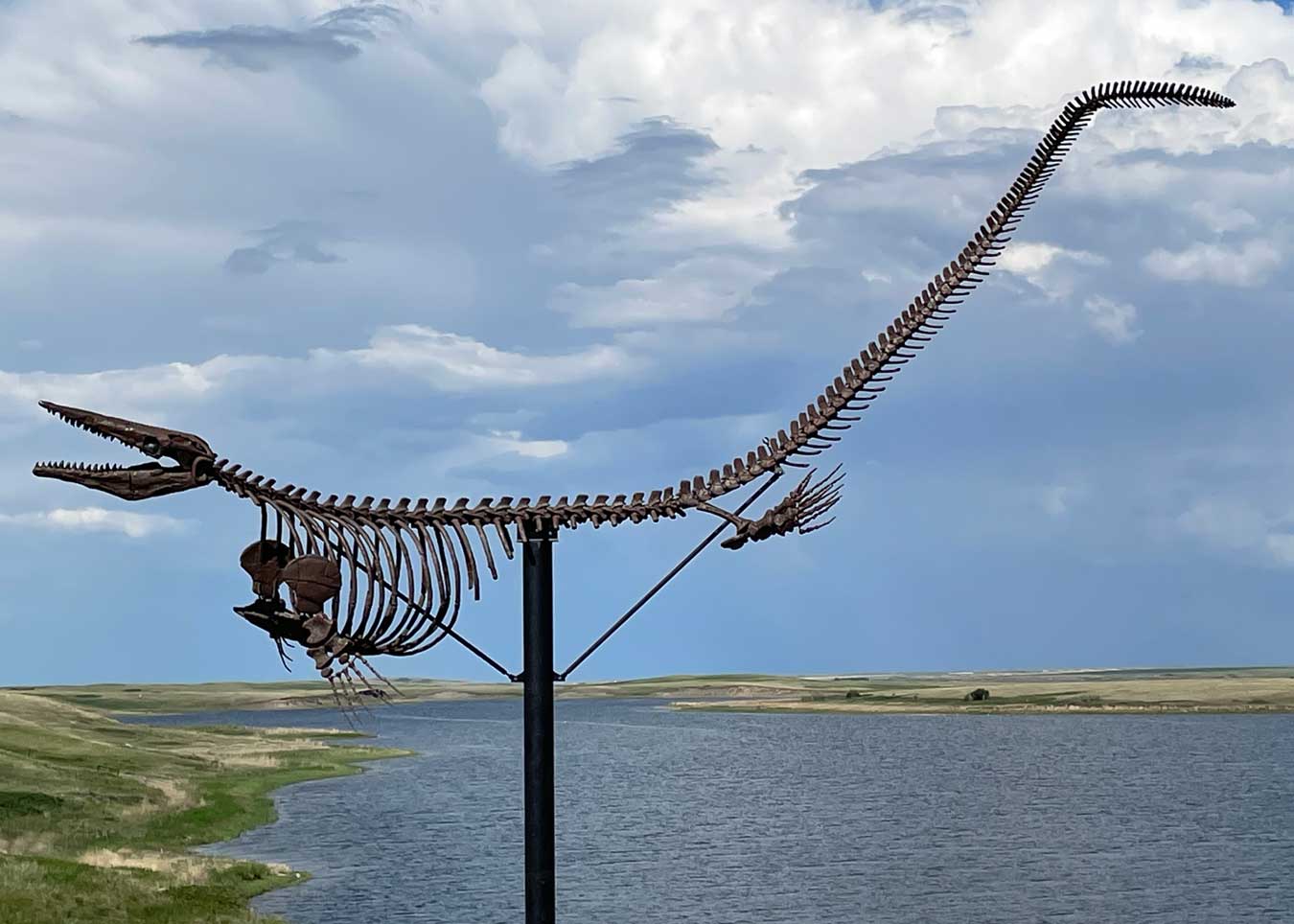
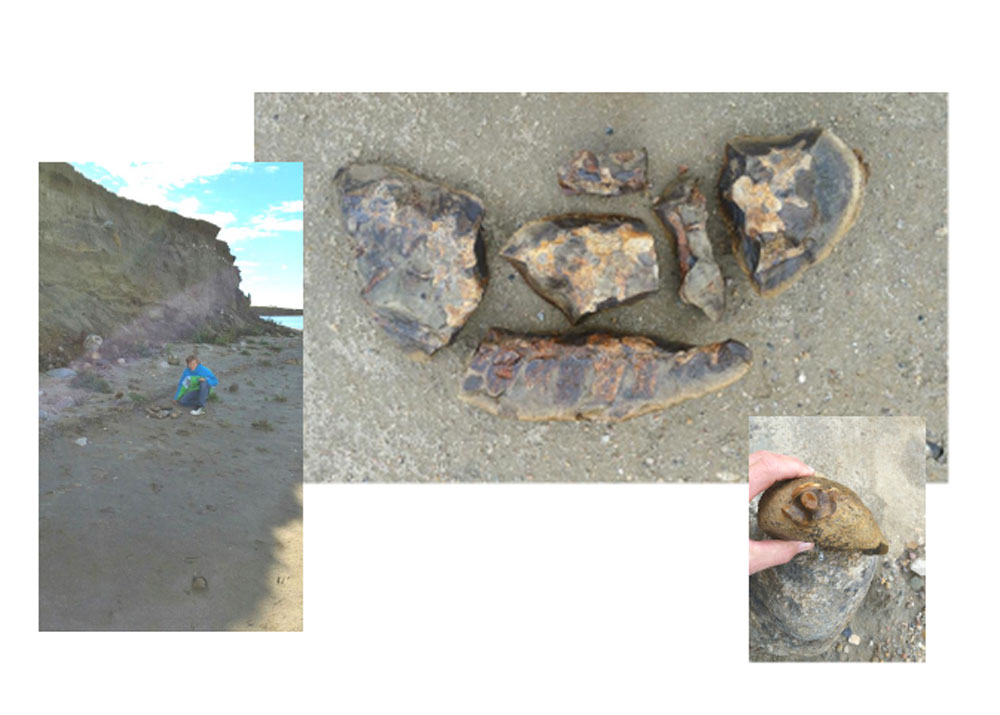
The Discovery
by Frank A. Hadfield
It was a beautiful day in September for a trip to the Carolside Reservoir to try our luck at catching some Pike. My Grandson, Kynan Perry is an avid fisherman and was very excited to be going out fishing for the day. We stopped near the campground first and tried our luck. We caught and released few nice Pike near the boat launch. After an hour or so I asked Kynan if he would like to try further north near the “old house” location. From experience combing the beach along the campground, I knew the prospects of finding fossils at the less travelled old house location, were much better as well. To be honest, this is what really drove me to ask if he wanted to go. I thought if the fishing there wasn’t great, we could at least prospect for fossils. Kynan caught a nice Pike right away, but the action tapered off and he decided he wanted to join me for a walk along the beach to look for fossils. We immediately found some nice baculite pieces on the surface. Baculites are marine cephalopods related to squid and Octopus. These extinct animals are quite common as fossils in the Bearpaw Formation that outcrops along the reservoir. We also found fossil clams, ammonites and belemnites which are also fairly common to find here. Much of the time the fossils are preserved in “concretions”. Very hard lumps of rock that often form around a nucleus of organic matter, such as shells, plants and even bone. After walking a few hundred metres, I noticed a quite large concretion that had rolled down out of the cliff face. It was broken into a number of pieces that revealed the internal structure. When I picked up the first piece I almost couldn’t believe my eyes. A perfectly preserved vertebra sticking halfway out of the rock! I immediately recognized it as being from a Mosasaur. I had spent hundreds of hours preparing the fossil bones of these creatures and mounted several skeletons for museums around the world. So my eye was trained to recognize this shape. Mosasaurs were quite literally “Sea Monsters”. Giant reptiles up to 50 feet long that could eat whatever they wanted! They had a unique dental apparatus… the pterygoid jaws. These were a second row of teeth in their palate, that could oscillate and pull their prey down their throat. A truly horrifying creature!
I also recognized, due to the small size of the vertebrae, that this must be a juvenile animal. Maybe 10-15 feet in length. These juveniles are even more rare to find than the adults. There is even the possibility that this could be an adult specimen from a species new to science. But, only further scientific study will be able to determine whether or not this was the case.
It was too good to be true! It’s always in the back of your mind to find something like this. But when it does and it is preserved so well…it’s really overwhelming!
I called out to my Grandson to come over and see what I had found. It didn’t take long for him to join in the search for more pieces. He quickly found more chunks and took them over to the water to wash the dirt off.
I was employed as a technician for the Geoscience Department at the University of Calgary. We had a collection permit for the area, but I never really expected to find something like this! I never leave home without my field collection backpack. Which has all the tools needed by a Paleontologist to collect and record the location of fossils. Data collection is absolutely critical when collecting fossils. Without it, the fossils are scientifically worthless. We took lots of pictures and noted the site in my field notebook, including GPS coordinates. Although I had a permit to excavate, we didn’t need to, as all the pieces were at the surface.
We washed all the pieces off, carefully packed them up and after combing the area one last time, headed back to the truck for the drive back to Drumheller. Kynan was now hooked on fossil hunting as much as fishing! This was the first time I had ever seen something take his focus away from catching a fish!
The Mosasaur specimen is now being catalogued for study at the Royal Tyrrell Museum of Palaeontology. Careful preparation is needed to gather more information about the animal. Was it really a juvenile or was it a new species of “pygmy Mosasaur”? What all is contained in the concretion? Many of the bones in the concretion are still articulated, or connected as they were in life. What would really be fantastic, is if the skull of the animal or at least parts of it were in the concretion. This would allow specialists in Mosasaur research to determine what exactly the genus and possibly species was!
Fossil hunting is not just about the finding and collection of prehistoric remains. It’s about discovering the history of the earth and the diversity of life over time. It was really a great feeling to see the excitement and wonder that our discovery brought to my Grandson. It was like a new world opened to him. One of potential scientific discoveries, all around us! That’s the essence of fossil hunting and Palaeontology. That the discoveries are endless…IF…you want to search for them.
The Project
Carolside Reservoir, located about halfway between Drumheller and Dinosaur Provincial Park, is now home to a brand new large scale replica of an adult Mosasaur.
The Special Areas Board is proud to partner with the Town of Drumheller, County of Newell, Travel Special Areas, Harvest Sky Economic Development Corporation to bring this exciting new attraction to the Dinosaur Scenic Route.
Interested in learning more about palaeontology, Alberta’s fossil heritage, etc., please follow this link to the Royal Tyrell Museum.
The mosasaur specimen has been catalogued for study at the Royal Tyrrell Museum of Palaeontology (Catalogue #RTMP 2019.026.0002).

